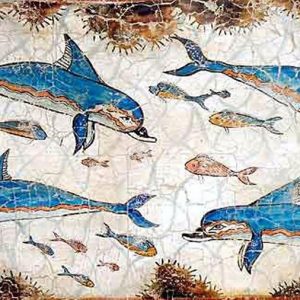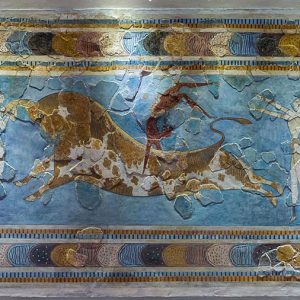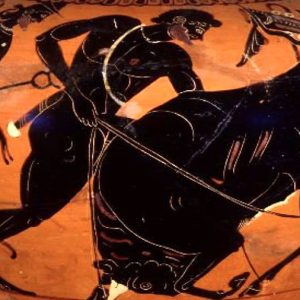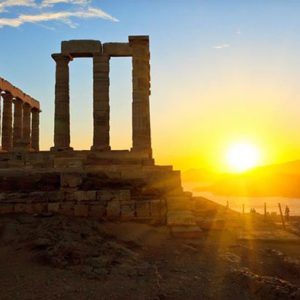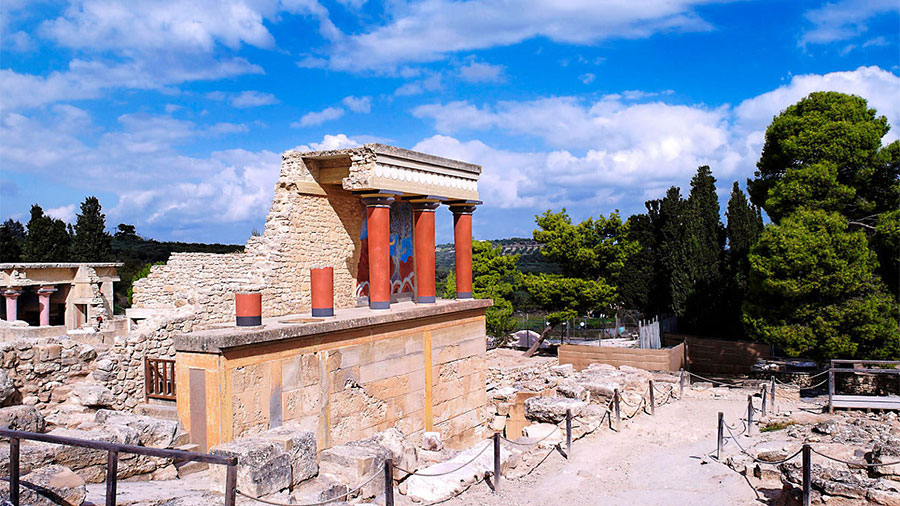
- Tuesday December 4, 2018
Knossos
Palace of Knossos was undeniably the capital of Minoan Crete. It is grander, more complex, and more flamboyant than any of the other palaces known to us, and it is located about twenty minutes south of the modern port town of Iraklio.
Knossos was inhabited for several thousand years, beginning with a neolithic settlement sometime in the seventh millennium BC, and was abandoned after its destruction in 1375 BC which marked the end of Minoan civilization. The first palace on the low hill beside the Krairatos river was built around 1900 BC on the ruins of previous settlements. It was destroyed for the first time along with the other Protopalatial palaces around Crete at 1700 BC, probably by a large earthquake or foreign invaders. It was immediately rebuilt to an even more elaborate complex and until its abandonment was damaged several times during earthquakes, invasions, and in 1450 BC by the colossal volcanic eruption of Thera, and the invasion of Mycenaeans who used it as their capital as they ruled the island of Crete until 1375 BC.

Arthur Evans, the British Archaeologist who excavated the site in 1900 AD restored large parts of the palace in a way that it is possible today to appreciate the grandeur and complexity of a structure that evolved over several millennia and grew to occupy about 20,000 square meters. Walking through its complex multi-storied buildings one can comprehend why the palace of Knossos was associated with the mythological labyrinth.
According to Greek mythology, the palace was designed by famed architect Dedalos with such complexity that no one placed in it could ever find its exit. King Minos who commissioned the palace then kept the architect prisoner to ensure that he would not reveal the palace plan to anyone. Dedalos, who was a great inventor, built two sets of wings so he and his son Ikaros could fly off the island, and so they did. On their way out, Dedalos warned his son not to fly too close to the sun because the wax that held the wings together would melt. In a tragic turn of events, during their escape Ikaros, young and impulsive as he was, flew higher and higher until the sun rays dismantled his wings and the young boy fell to his death in the Aegean sea. The Labyrinth was the dwelling of the Minotaur in Greek mythology, and many associate the palace of Knossos with the legend of Theseus killing the Minotaur.
Source: ancient-greece.org
